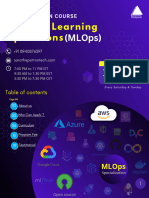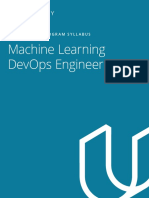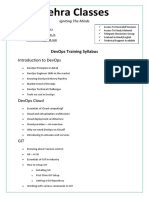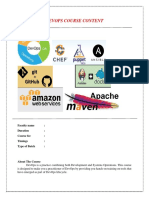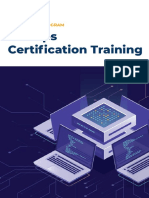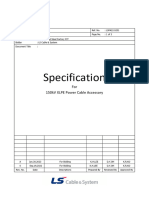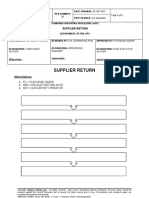100% found this document useful (1 vote)
198 views6 pagesImagecon MLops Syllabus
The MLOps syllabus covers the fundamentals of MLOps, including its components, roles, and comparison with DevOps, followed by practical aspects of building end-to-end machine learning projects. It also includes detailed sections on Git, Data Version Control (DVC), containerization with Docker, Kubernetes, monitoring with Grafana, continuous integration using Jenkins, and managing the machine learning lifecycle with MLFlow. Each section contains theoretical concepts, practical labs, and installation guides to facilitate hands-on learning.
Uploaded by
KeerthivasanCopyright
© © All Rights Reserved
We take content rights seriously. If you suspect this is your content, claim it here.
Available Formats
Download as PDF, TXT or read online on Scribd
100% found this document useful (1 vote)
198 views6 pagesImagecon MLops Syllabus
The MLOps syllabus covers the fundamentals of MLOps, including its components, roles, and comparison with DevOps, followed by practical aspects of building end-to-end machine learning projects. It also includes detailed sections on Git, Data Version Control (DVC), containerization with Docker, Kubernetes, monitoring with Grafana, continuous integration using Jenkins, and managing the machine learning lifecycle with MLFlow. Each section contains theoretical concepts, practical labs, and installation guides to facilitate hands-on learning.
Uploaded by
KeerthivasanCopyright
© © All Rights Reserved
We take content rights seriously. If you suspect this is your content, claim it here.
Available Formats
Download as PDF, TXT or read online on Scribd
/ 6



